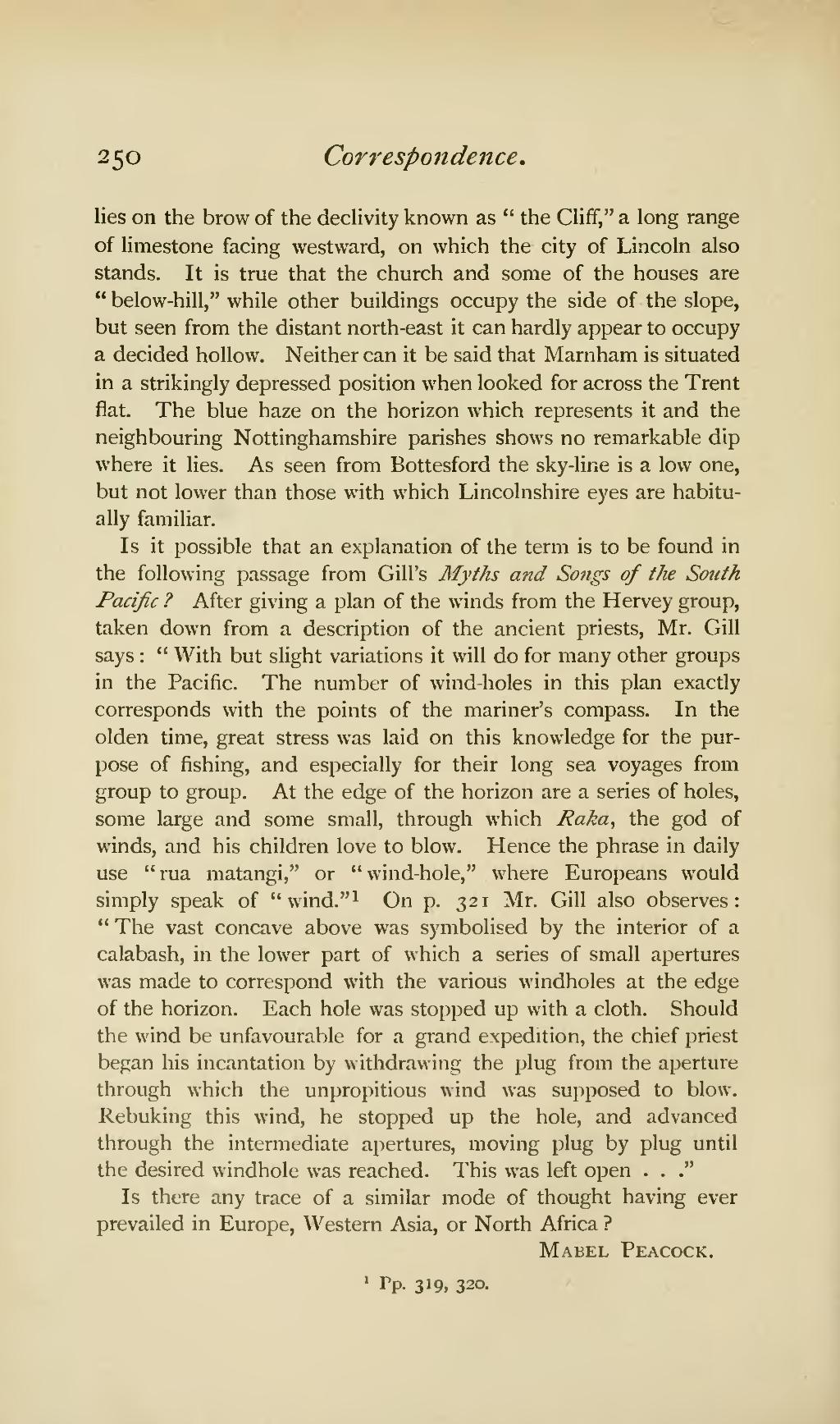250 Correspondence,
lies on the brow of the declivity known as " the Qiff," a long range of limestone facing westward, on which the city of Lincoln also stands. It is true that the church and some of the houses are " below-hill," while other buildings occupy the side of the slope, but seen from the distant north-east it can hardly appear to occupy a decided hollow. Neither can it be said that Marnham is situated in a strikingly depressed position when looked for across the Trent flat. The blue haze on the horizon which represents it and the neighbouring Nottinghamshire parishes shows no remarkable dip where it lies. As seen from Bottesford the sky-line is a low one, but not lower than those with which Lincolnshire eyes are habitu- ally familiar.
Is it possible that an explanation of the term is to be found in the following passage from Gill's Myths and Songs of the South Pacific ? After giving a plan of the winds from the Hervey group, taken down from a description of the ancient priests, Mr. Gill says : " With but slight variations it will do for many other groups in the Pacific. The number of wind-holes in this plan exactly corresponds with the points of the mariner's compass. In the olden time, great stress was laid on this knowledge for the pur- pose of fishing, and especially for their long sea voyages from group to group. At the edge of the horizon are a series of holes, some large and some small, through which Raka, the god of winds, and his children love to blow. Hence the phrase in daily use "rua matangi," or "wind-hole," where Europeans would simply speak of "wind."^ On p. 321 Mr. Gill also observes: " The vast concave above was symbolised by the interior of a calabash, in the lower part of which a series of small apertures was made to correspond with the various windholes at the edge of the horizon. Each hole was stopped up with a cloth. Should the wind be unfavourable for a grand expedition, the chief i3riest began his incantation by withdrawing the plug from the aperture through which the unpropitious wind was supposed to blow. Rebuking this wind, he stopped up the hole, and advanced through the intermediate apertures, moving plug by plug until the desired windhole was reached. This was left open . . ."
Is there any trace of a similar mode of thought having ever prevailed in Europe, Western Asia, or North Africa ?
Mabel Peacock. ' Pp. 319, 320.
